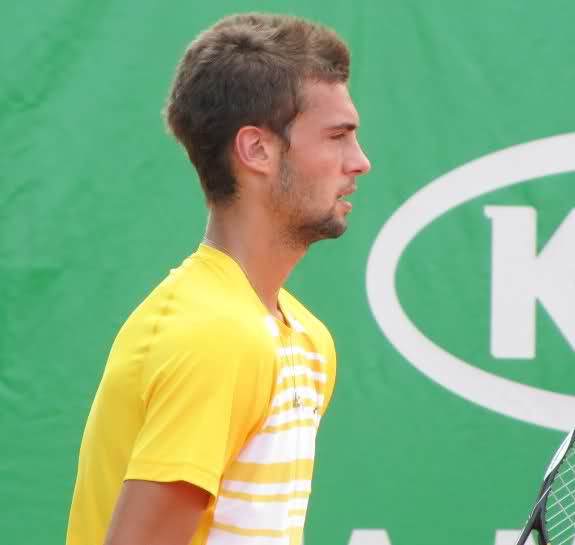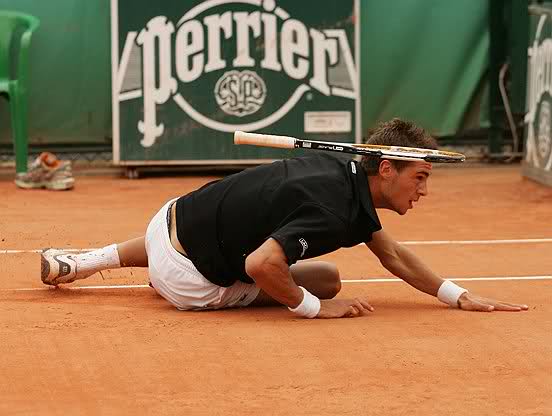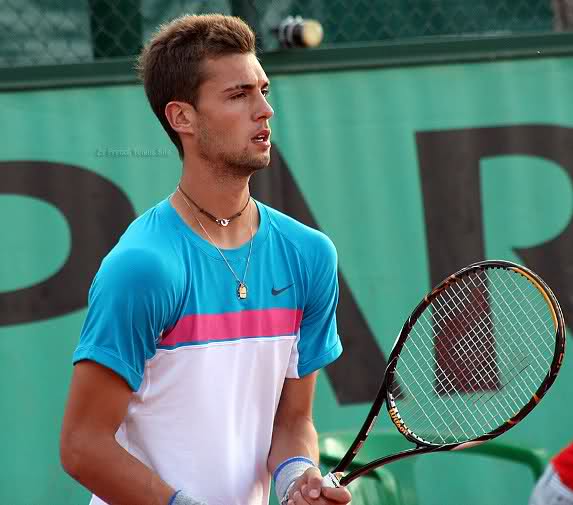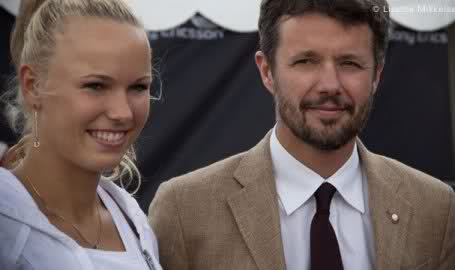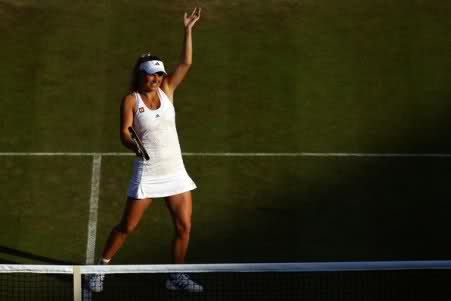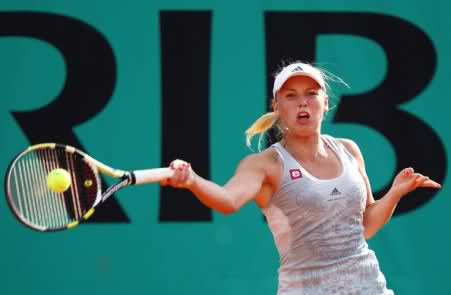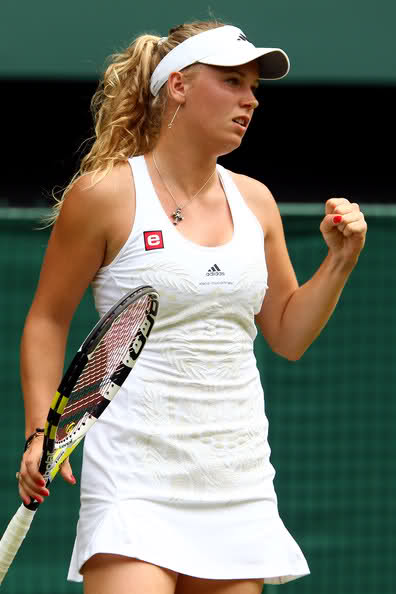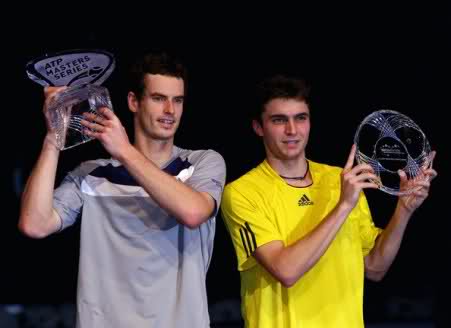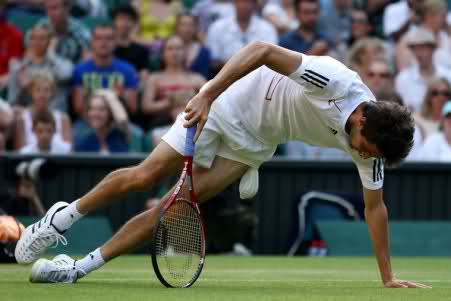-

Archives
- December 2010 (38)
- November 2010 (23)
- October 2010 (79)
- September 2010 (55)
- August 2010 (82)
- July 2010 (35)
Feature Articles
- A Flashback To Greater Times
- All Hell Breaks Loose In Cordenons
- Caroline Wozniacki: An Analysis
- Introducing: The Fucking Benoit Paire
- Rafael Nadal: The Struggle For Perfection
- The Incredible Story Of Deja Kitchiner
- The WTA US Series Disappoints
- We Will Miss You, Tatiana Golovin
- What's Next For Maria Sharapova?
- Will Andy Murray Ever Win A Slam?
The Brat Pack 2011
Flashback
Meta
-
Blogroll
Categories
- Agnieszka Radwanska
- Aisa Kleybanova
- Aleksandra Krunic
- Alizé Cornet
- Ana Ivanovic
- Anastasia Pavlyuchenkova
- Anastasija Sevastova
- And the winners are…
- Andrea Petkovic
- Andy Murray
- Andy Roddick
- Anna Chakvetadze
- Anna Kournikova
- Aravane Rezai
- Ashley Harkleroad
- ATP Journeymen
- ATP Offcourt
- ATP World Tour Finals
- Australian Open
- Australian Open WC Playoff
- Bangkok
- Beatrice Capra
- Beijing
- Benoit Paire
- Bernard Tomic
- Blog
- Bojana Jovanovski
- Brat Pack
- British Tennis
- Caroline Wozniacki
- Choke!
- Cincinnati
- Copenhagen
- Daniel Koellerer
- Daniela Hantuchova
- Dasha Gavrilova
- David Nalbandian
- Davis Cup
- Deja Kitchiner
- Dinara Safina
- Dmitry Tursunov
- Doha WTA Championships
- Drama
- Elena Baltacha
- Elena Dementieva
- Elena Vesnina
- Ernests Gulbis
- Exhibitions
- Feature Article
- Fed Cup
- Feliciano Lopez
- Fernando Gonzalez
- Fernando Verdasco
- Filip Krajinovic
- Flashback
- Flavia Pennetta
- Florian Mayer
- Francesca Schiavone
- Gael Monfis
- Gilles Simon
- Grigor Dimitrov
- Guest Articles
- Heather Watson
- Hopman Cup
- Igor Andreev
- Injuries
- Injury Watch
- Interviews
- Introduction
- Ioana Raluca Olaru
- It's Personal
- ITF
- James Blake
- Janko Tipsarevic
- Jarmila Groth
- Jelena Dokic
- Jelena Jankovic
- Jennifer Capriati
- Jeremy Chardy
- Jo-Wlfried Tsonga
- Johanna Larsson
- John Isner
- Juan Carlos Ferrero
- Juan Martin Del Potro
- Juan Monaco
- Julia Goerges
- Juniors
- Jurgen Melzer
- Justine Henin
- Karolina Pliskova
- Kim Clijsters
- Kimiko Date-Krumm
- Laura Robson
- Lauren Davis
- Li Na
- Lindsay Davenport
- Linz
- Lleyton Hewitt
- Mandy Minella
- Marat Safin
- Marcos Baghdatis
- Mardy Fish
- Maria Kirilenko
- Maria Sharapova
- Marin Cilic
- Marion Bartoli
- Martina Hingis
- Mary Carillo
- Melanie Oudin
- Metz
- Michael Llodra
- Mikhail Youzhny
- Mirjana Lucic
- Misc
- Montreal
- Nadia Petrova
- Nastya fucking Myskina
- New Haven
- News
- Nicolas Almagro
- Nikolay Davydenko
- Novak Djokovic
- Olivia RoGOATska
- Other ATP Events
- Other WTA Events
- Paris
- Patty Schnyder
- Picture post
- Player Parties
- Polona Hercog
- Portoroz
- Queen Bethanie
- Quotable Quotes
- Rafael Nadal
- Rambling
- Random
- Rant
- Retirements
- Ricardas Berankis
- Richard Gasquet
- Robin Haase
- Robin Soderling
- Roger Federer
- Ryan Harrison
- Sabine Liscki
- Sam Querrey
- Sam Stosur
- San Diego
- Sania Mirza
- Seoul
- Serena Williams
- Shino Tsurubuchi
- Sibing rivalry
- Sloane Stephens
- Sorana Cirstea
- Steffi Graf
- Svetlana Kuznetsova
- Tatiana Golovin Spam
- Tennis
- Thomaz Bellucci
- Timea Bacsinszky
- Tokyo
- Tomas Berdych
- Tommy Robredo
- Toronto
- Tournament Blogs
- Ula Radwanska
- Uncategorized
- Unruly Tennis Fathers
- US Open
- US Open Series
- Valencia
- Venus Williams
- Vera Dushevina
- Vera Zvonareva
- Victoria Azarenka
- Videos
- Virginie Razzano
- Washington
- Wimbledon
- WTA Championships Doha
- WTA Off court
- WTFs
- Yanina Wickmayer
- Zheng Jie
Category Archives: Feature Article
Remembering Anna Kournikova
Don’t you just love going back down memory lane? Remembering what (and who) got you into tennis and reminding yourself why you came to love the sport. I sure do. Unsurprisingly, the generation that commanded my attention from a ridiculously young age was the explosive foursome of Venus Williams, Martina Hingis, Anna Kournikova and Serena Williams. Admittedly, I hated Martina back then (my opinion on her has drastically changed since then) – but even she, with her mouth the size of Mount Everest, and her evil Chucky smile, made me sit up and take notice of tennis like never before. I unconditionally loved the other three, however. And though Venus and Serena, throughout the years, have always been my favourite players, that beautiful blonde Russian, who I forever longed to marry, was never far behind.
When Anna Kournikova is brought into a conversation, the words and phrases that come to the surface are usually along the lines of “blonde”, “beautiful, “ponytail”, “couldn’t even win a title”, “she SUCKS!” And it’s a shame. Sure she never won a title, she didn’t even come close to matching the achievements of her three contemporaries, and her beauty forever generated more publicity than her game, but something usually forgotten or neglected to mention is that outside of the glamour, away of the photoshoots, and removed from those indecently gigantic “only the balls should bounce” billboards, Anna Kournikova was a great tennis player.
Though she retired at the tender age of 22 with a chronic back injury, she managed to reach the fourth round of all slams multiple times, peaking with a semifinal at Wimbledon in 1997, the quarterfinals of the Australian Open in 2001, in addition to a final at the self-billed “fifth slam” in Miami (defeating 4 Grand Slam Champions and top tenners in a row) and finishing 2000 with a career high ranking of 8. Her doubles career was even more impressive – she reached number one with two Grand Slams, two tour championships in addition to amassing a number of slam finals and 12 other titles with a slew of different players.
Outside of mere stats, what made her such a great player were her god-given talents. From her flawless hand and foot speed, to her intelligent use of angles, her perfectly executed dropshots, the manner in which she could navigate her way around the net – anticipating passing shots, cutting off angles and brushing away volleys for winners. Though built on the basis of strong, flat groundstrokes, her variety and the intellect she injected into her tennis made her such an exciting, attractive and formidable player when at her best.
And that’s why I hope, perhaps naively, that one day it will just click in people’s heads and she won’t be remembered solely for the fact that she is a drop-dead gorgeous tennis player. And certainly not for the misconception that she was awful at her profession. I hope that one day she will be remembered for the fact that on the court she was entertaining, exciting, and fundamentally, a damn good tennis player.
Posted in Anna Kournikova, Feature Article
1 Comment
The Case Against Doha
After reading back on my Maroon Group preview post from earlier on today, I realised just how positive it came across as. Too positive. Don’t get me wrong, I want to be excited about this week’s WTA Championships, I really do.
But I can’t.
Why? The location of course plays a big part. Even with two of my favourite players winning in the last two years, Doha has just always left a sour taste in my mouth. Outside of the matches involving the Williams sisters, the crowds are usually non-existant. And that’s what happens when you hold a tournament of this calibur in a country that couldn’t care less about tennis. And believe me, I do understand why the WTA are so keen to expand to Asia ($$$), but that doesn’t mean it’s not disappointing.
The biggest factor, however, lies in the tennis itself. What makes the WTA such a unique and exciting sport to watch is the unpredictability and the ridiculousness of it all. We all know it, embrace it, and downright love it. But the WTA has become too much about the drama, and not enough about the actual tennis. It comes to a point when you’re wondering “when is it going to be about the tennis again?” And I have reached that point.
The reality is that a fair amount of this unpredictability is caused by the top players underperforming all year, and so while there is excitement in the early rounds of events, as we move further along in the draws it’s usually just a case of the remaining top players taking care of business against a much lower-ranked opponent (and usually one of those players is Wozniacki). There are no riv-alr-ies anymore, I mean top five players have met each other a mere three times this year. And certainly in the Doha draw itself there are no possible matches screaming “possible classic” or anything close to that. One match-up I have always loved is Clijsters vs. Jankovic. But look at the state Jankovic is currently in? It won’t be pretty.
I’ll still be watching of course, and I’ll still be hoping that I’m completely wrong. But I doubt it. Usually Year End Championships are a reflection of the year itself, and considering the big events of this year have usually been filled with one-sided, injury-filled blowouts, it is likely that this week in Doha will turn out in exactly the same way.
Posted in Feature Article, WTA Championships Doha
2 Comments
Rafael Nadal: The Struggle For Perfection
Rafael Nadal has achieved it all; he has reached the summit of the ATP World Tour Ranking, he has won an Olympic Gold medal, clinched the Davis Cup twice, won 18 ATP 1000 titles, and most recently he achieved the Career Grand Slam, defeating Novak Djokovic to capture that elusive US Open title. He has achieved so much in so many different areas of tennis, on different surfaces and in different continents. However, he wasn’t always the well-rounded player that we see today. This has been achieved through an abundance of determination, hard work and most importantly – a hell of a lot of heart.
2002-2005: Rafael Nadal’s Big Arrival
In April 2002, a 762nd ranked 15 year old by the name of Rafael Nadal played in his debut match on the ATP tour in his hometown of Mallorca. He won it, defeating Ramon Delgado of Paraguay in straight sets and throwing himself into the record books by becoming only the 9th player in the Open Era to win an ATP Main Draw match. Rafael Nadal had arrived.
Throughout this period, Nadal was seen solely as a claycourt player. And rightly so. Though he achieved a handful of impressive results on hard, it was on the claycourts where he really excelled. At this time he had a number of limitations – his backhand, his net-game, his slice and serve. Nadal compensated for these weaknesses by standing miles behind the baseline and using his outstanding athleticism and highly-revered forehand to grind his opponents into the ground. And it worked. Easily. By 2005 he had won his first French Open in his very first appearance. He was already being proclaimed the “King of Clay”, and while his fans were exuberant at the victory, Nadal himself was far from satisfied. In fact, he took that title as an insult.
2006-2008: Attacking the Grass
Though Nadal continued to waltz through the claycourt seasons, his eyes were firmly set elsewhere. The Spaniard had always maintained that Grass is and was his favourite surface. Not the best surface for his game, of course, but the mystery and prestige surrounding it simply proved too much for him. Growing up in Majorca, the surface of grass was probably akin to a forbidden fruit to him, and one that he longed to taste. After his victory at the French Open in 2005, he finally had the chance to do just that.
Between 2006 and 2008, Nadal worked tirelessly on the qualities he needed to succeed on grass. He worked on attacking and playing more aggressive tennis, he developed a formidable traditional lefty slider to compliment the grass, and he added a slice to his ever-growing repertoire of shots. He was transforming at a magnificent rate. A year later he was in his first Wimbledon final and in two years from that, he took the title in magnificent circumstances – defeating Roger Federer 9-7 in the 5th set in one of tennis’ all time classic matches. Wimbledon? Check.
2008-2010: Breaking down the Hardcourts
With 5 Grand Slams to his name, he had already achieved so much at the tender age of 22. However, Nadal still wasn’t satisfied. And he wouldn’t until he mastered the hardcourts, and so he got to work. He continued to refine his game while working on further flattening out both his serve and groundstrokes. A month later he would snatch the Olympic Gold Medal in Beijing, before taking his third Grand Slam in Australia 2009, yet again defeating Federer in the final. Still, people doubted that he would ever win the US Open to complete the set. It was too fast for him, his serve wasn’t good enough and his knee problems during the clay and grass seasons gave people more reason to doubt him. He simply didn’t have the game to win on such a quick surface, they said.
They were, of course, categorically wrong. At the 2010 US Open he would clinch that final slam, completing the Career Golden Grand Slam and catapulting him into the history books once again. He consistently unleashed serves above 130mph, he strolled into the forecourt and easily put away the most testing volleys and he hugged the baseline as if it was a long-lost friend. What is ironic is that the French Open wasn’t where he played his best tennis in 2010, nor at Wimbledon. He played his best match of the year in the finals of the US Open. Now that is special.
What Is Next For Rafael Nadal?
Rafael Nadal has to be considered the hardest worker and most determined player in the history of the game. He has exceeded so many expectations and has improved more than any other player. Ever. The scary thing is that he continues to evolve to this very day. Will he ever reach a ceiling? In the US Open final it was the backhand that emerged as the dominant weapon rather than his legendary forehand. With his trademark open stance technique he was unleashing breathtakingly powerful and flat-as-a-pancake backhands that even the defence of Novak Djokovic stood no chance against. Not to mention the fact that he has transformed himself into one of the most complete players in the world, and he is capable of bringing his very best tennis to every single surface. Many think that the knee problems will emerge again and cut short his career, but if he continues to refine this new all-out attacking game of his and lighten the stress on his body, he will prove them wrong. He always does.
Posted in Feature Article, Rafael Nadal
Leave a comment
Maria Sharapova Loses To Kimiko Date-Krumm In Tokyo. What’s Next For Sharapova?
There was a huge shock today as Defending Champion Maria Sharapova was bounced out of Tokyo by Kimiko Date-Krumm on the eve of her 40th birthday. It has to be said that Maria was apparently visibly struggling with a bad cold all through the match. But still, she continued from where she left off in the US Open 4th round, hitting 11 double faults and losing a *3-2 40-0 lead en route to the defeat.
This loss effectively ends Maria’s hopes of reaching Doha and after Beijing, it will be interesting to see where she plays. Following her exit at the US Open she said she had 3 tournaments left to play (Tokyo, Beijing and Moscow), but of course she has also qualified for Bali. Playing Bali would probably be quite a shock to her system and a tough pill to swallow considering all of her old rivals will be participating in the Sony Ericsson Championships Doha. But it may also be the wake-up call she needs to start playing quality tennis again.
Regardless of what happens between now and the end of the year, 2011 is going to be an extremely important year for the three-time slam champion. There is already talk about whether or not she will ever win another slam and the possibility of her becoming a second-tier player for the rest of her career. I completely disagree with that idea, and in general I think that it’s silly to write off someone who has achieved all she has achieved while she is still only 23. However, I do think that 2011 will be a very telling year for Maria Sharapova.
What is frustrating for all is that it’s the same Maria Sharapova there; The same groundstrokes. The same gamestyle. The same service motion. And she has actually improved parts of her game, for example her volleys and finesse shots in general. However, she lacks confidence, her serve often falls apart, her play is far too central - lacking the wicked angles of old, and she is a step slower. If she can work on those areas and improve them, then she can become a force again. The thing is, she doesn’t even need to play anywhere close to the magnificent level she exhibited before the surgery. She just needs to play well.
If I was in the Sharapova camp and had any sort of influence on her tennis, I would take her to the side and communicate three short and simple words to her that would probably make a world of difference to her career; Bring. Back. Yuri.
Posted in Feature Article, Kimiko Date-Krumm, Maria Sharapova, Tokyo
1 Comment
Introducing: The Fucking Benoit Paire
This week 21-year-old French talent Benoit Paire reached the finals of the San Sebastian Challenger event in Spain before losing to Albert Ramos-Vinolas. I know you don’t know who the hell Benoit Paire is, and I don’t expect you to. But he is someone I have been following for quite some time and he has probably become one of my favourite players, and so I will be educating you on all things Benoit Paire.
The first thing you need to know about Benoit is that he is a headcase. Just putting that out there. I know a lot of people seem to be attracted to headcases so there you go. I first watched him sometime around the beginning of this year and I was absolutely blown away by his talent and the way in which he plays tennis. Not to mention how laid-back he was on court. His serve is huge, gorgeous backhand, he effortlessly glides around the court, enjoys coming to the net and his dropshot is a weapon of mass destruction. It was complete mayhem as he aced at will, smashed backhand return winners, dropshotted, serve and volleyed and just perfectly executed every single low percentage and unimaginable shot in the book. After getting over the shock of how low he was ranked, I was so interested to see him play again. He played his next round the following day and he of course proceeded to dropshot himself off the court, playing them at the most ridiculous times and eventually losing easily to a player ranked far below him. Welcome to the world of Benoit Paire.
After watching him, I was immediately intrigued and so I decided to do a little homework on him. To say that the results were interesting would be an understatement. Here are some (translated) quotes from him and others about him:
“If I just keep the ball in play, I get bored. We play tennis to have fun too, so I prefer to try things, dropshots, etc. Sometimes it’s brilliant, but sometimes, well, it’s really hopeless. A bit of everything. I’d need to ‘channel’ myself to keep only the best and stop jeopardizing my chances unnecessarily.” Source
“I’m here to have fun, but well, it’s true that I should sometimes cut down the rubbish.”
People must think I’m crazy. My philosophy is that if I have to play a point, try to play a beautiful one, no? But I’ve calmed down now. I’m better managed since I entered the CNE (France’s National Training Centre) in November. The win over Elgin is my best memory so far, I had never played in front of so many people.”
“He likes the game. He always wants to play a beautiful point. He has a very good serve, a beautiful two-handed backhand and he’s very clever at the net. But he has incredible ups and downs. The Jedi of Star Wars. For me he’s like Luke Skywalker when he started. I need to take him over to the good side of the Force. The only difference is that his role isn’t to save the world, but to make the most out of his potential… Which is huge.” -- Ex-coach, Jerome Prigent
“He must be the only player on the tour whose attacking shot is the dropshot”
He is ranked inside the top 200 now and after qualifying for the French Open this year, he attracted some well-earnt attention. However, his stories were legend among French tennis players from even before he was in the top 1000. One of his most famous stories is from a day when he didn’t want to go to a tournament. His coach insisted that he went, and so Benoit took his three racquets, broke them all, and said: “Are we still going now?”
As I said before, he puts so much personality into his game too. Two years ago Benoit played in the French Open qualifying. In the third set was down triple match point against Michail Elgin having wasted one in the second set. But he saved them in style, with a forehand dropshot from far behind the baseline followed by two serve and volleys. He won that game then the match and was given a standing ovation from the crowd. Elgin was disgusted and needed a cigarette after the match to settle his nerves.
There was also real controversy in his career when the National Technical Director, Patrice Hagelauer, kicked him out of the Integrated Training Center at Roland Garros last year because of bad behaviour and his temper on court. He was angry at first and refused to play tennis at all for two months, but eventually he calmed down and has since gone on to record the best results of his career thus far. Qualifying for Roland Garros this yeah and playing a tight match with Olivier Rochus was definitely one of the highlights, and it was also a middle finger to the FFT (French Tennis Federertion) who refused to grant him a main draw wildcard based on his past behaviour.
His results are still unbelievably inconsistent though -- one week he will make a challenger final defeating multiple top 100 players, and then the next week he will lose to the world number 988 in straight sets. However, he is making progress and there is no doubt that there will come a time in the near future when everything glues together and he will really break through. And we’ll be waiting. Allez Benoit!
(Pictures: Ze French Tennis Site)
Posted in Benoit Paire, Feature Article
2 Comments
The US Open Series continues to disappoint on the WTA Tour
The pinnacle tournaments of the 2010 Olympus US Open Series begins next week in Cincinnati followed by a visit to Montréal. These two tournaments are known under the new Roadmap as Premier 5 tournaments meaning they offer the most prize money and ranking points besides the four major championships. They also offer the most points for the Olympus US Open Series standings which determines the players who will receive a bonus in their prize money when they compete in the US Open which begins August 30th. The other three events that comprise the 2010 Olympus US Open Series are San Diego, Stanford, and New Haven.
Since its inception in 2004, only one woman has captured both the US Open Series and the US Open. This feat was achieved by Kim Clijsters in 2005 which recorded the highest payout in women’s sports history, a cheque for 2.2 million USD. From then on however, it has become littered with injuries, withdrawls, and subpar performances from many of the top women.
In 2006 defending US Open Series Champion and US Open Champion Kim Clijsters suffered a wrist injury while competing in the Rogers Cup held in Canada. Clijsters had already picked up a title on the 2006 US Open Series tour in Stanford before being unable to compete for the remainder of the series and US Open due to the wrist injury. Ana Ivanovic went on to win the 2006 edition of the Rogers Cup and the US Open Series that year but failed to back it up falling in the 3rd round to 91st ranked Serena Williams who needed a wild card to enter the event. 2006 marked the first time that all 5 events on the US Open Series were captured by 5 different women.
The 2007 US Open Series boasted Maria Sharapova atop the leader board at the start of the US Open. Sharapova captured the 2007 US Open Series primarily on the strength of winning the Acura Classic in San Diego that year, which was the last year this event was held as a Tier I tournament. Sharapova was seeded 2nd for the 2007 US Open, but was upset in the 3rd round by 30th seeded Agnieszka Radwanska of Poland. For the 2nd straight year all 5 events were won by 5 different women.
2008 saw Dinara Safina go undefeated during her stretch of the US Open Series. Safina captured two titles in Los Angeles and Montréal to achieve a career best ranking of 7th in the world. Safina was the 6th seed for the US Open by virtue of Maria Sharapova’s withdrawal. Dinara reached the semifinal stage of the US Open, but fell to 4th seeded Serena Williams 6-3 6-2 in an error-filled performance.
2009 Rogers Cup titlist was Russia’s Elena Dementieva who also clinched the US Open Series that year. Dementieva was a consistent performer throughout the summer reaching the semifinals in Stanford and Cincinnati before entering the winners circle in the US Open Series for the first time since 2006. Unfortunately the Russian would fall in the 2nd round of the US Open to unseeded American upstart Melanie Oudin.
So far the 2010 edition has been headlined by more withdrawals of the top names such as Justine Henin, Venus Williams, and Serena Williams than it has been by riveting and inspiring play.
Jelena Jankovic, who is currently ranked number two in the world, is nursing an ankle injury which she blamed for losing her opening match this week in San Diego to Alisa Kleybanova. Kim Clijsters, many experts favorite to win big during the 2010 US Open Series, has not seen competitive action since her shock loss at Wimbledon. Maria Sharapova had a small resurgence in reaching the final in Stanford but struggled in her quarterfinal and semifinal matches before losing tamely to Victoria Azarenka. Newly crowned Roland Garros champion Francesca Schiavone has won just one match in her three events following her biggest triumph. Former world number ones Safina and Ivanovic have managed just one win each so far in the 2010 US Open Series. It’s safe to say we’re headed for another dull and lackluster summer in North America.
Posted in Feature Article, Guest Articles, US Open Series
4 Comments
Caroline Wozniacki: An Analysis
Four years on from an impressive Junior Career which saw her rise number one and win the Junior Wimbledon Championships in 2006, Caroline Wozniacki has established herself as the leading young star in Women’s Tennis. Her accomplishments include seven career titles, a runner-up at last year’s US Open and a career high of number two in the WTA rankings. Nicknamed ‘Sunshine’, the 20-year old is the WTA’s dream – tall, blonde, friendly and always smiling with the results to match. However, the young Dane is a curious subject among tennis fans due to the nature of her game and so Foot Fault will shift its attention to the current world number three.
The Strengths of Caroline Wozniacki
On one hand there is a lot to admire about Caroline Wozniacki. Her game is built around the defensive aspects of tennis with her anticipation, movement, agility, footwork and defence all first-rate and key parts of her game. Though far from a fluid mover, the Dane covers the court impressively and is very rarely seen in the wrong position. Though lacking the mental capabilities of the likes of Maria Sharapova and Serena Williams, her determination and resilience are a well-documented aspect of her game and a rare quality among the 20-year-old’s generation. Throughout her short career she has frequently recovered from awkward positions to win tight three-set matches. Most significantly, during last year’s WTA Championships when she launched two dramatic comebacks against Vera Zvonareva and Victoria Azarenka to reach the semi-finals in her very first appearance.
From a technical standpoint, her backhand is her favoured shot. Equally adept at rolling an acute crosscourt angle and flattening out her stroke to attack down-the-line, her backhand gives her the opportunity to turn defence into offence. Plus her exaggerated use of her left hand provides her with an abundance of control and accuracy. Wozniacki’s serve has also improved into a solid asset for the Dane. At 5ft10, she is capable of serving at speeds of up-to 199kph with improved accuracy and precision. On the return the retriever is brilliant at floating as many balls back into play and likewise in rallies, her consistency and unwillingness to miss is a prominent part of Wozniacki’s game. Often playfully nicknamed the ‘Great Wall of Denmark’, Wozniacki frustrates opponents into unforced errors by keeping the ball consistently deep and using her trademark ‘moonballs’ to reset the point whenever pushed out wide. However, though her consistency is a bona fide strength against lower-ranked opponents, this can also be the downfall of the young Dane when up against elite opponents.
The Weaknesses of Caroline Wozniacki
The problem is that for a player of her calibre, the weaknesses and limitations of Wozniacki’s game are astounding. First and foremost her technique is faulty and prone to breaking down. Her service is known to fall out of rhythm – her knees, shoulders and arms all acting out of sync. Her forehand is chronically unable to create or absorb power and her hit point varies between contacting the ball far too late and too early, which is why the Dane so often reverts to ‘moonballing’. Wozniacki also lacks the natural feel and touch of the elite retrievers before her. For example she is unable to even play effective slices or dropshots because she struggles with basic concepts such as taking her left hand off the racquet. In the forecourt, the roadrunner is often guilty of attempting to throw her bodyweight into the ball as she volleys rather than a swift punch with the racquet head, with largely catastrophic results.
In addition to the technical shortcomings of her game, Wozniacki’s style of play is simply not effective when facing an elite player in good form. Even with her strong backhand, the retriever struggles to put the ball away and is often far too reliant on errors from opponents which simply won’t come at the elite level. She plays at consistent level, so while players will always have to play solid tennis to beat her, if they can match her level from start to finish they won’t face an incredible amount of resistance – as we saw during Wozniacki’s 2-6 0-6 humiliation to Petra Kvitova at this year’s Wimbledon. Though often credited as being a smart player, when facing an opponent playing at a high level Wozniacki often appears clueless and the one-dimensionality of her game is truly revealed.
So, what is in store for Caroline Wozniacki?
Wozniacki has managed to rise to number two in the world with a Grand Slam Final under her belt. However even in a period where many of the best players in the world are slumping and are in far from top form, we suspect that there will always be a player playing well enough to pip Wozniacki to the post at a Grand Slam. Whether it be Serena Williams, Venus Williams, Maria Sharapova, Justine Henin, Kim Clijsters, another top 20 player or even an inspired, dangerous floater. There are simply too many players who posses far too much firepower and intelligence for the Dane to really make her mark in the tennis world.
However, these players are ageing quickly. Though Maria Sharapova may find herself as an elite player for years to come, Ana Ivanovic may pick herself out of the gutter and Svetlana Kuznetsova might find some consistency, the rest only have a handful of years left in tennis. The up-and-coming generation is far inferior – there are no talents breaking through at 16 years old. There are no players with the ballstriking ability of a Maria Sharapova or Lindsay Davenport. There are no players athletic and talented enough to fuse offense and defence in the manner that Serena Williams, Venus Williams, Kim Clijsters or Justine Henin do so incredibly well. Therefore in the future, Wozniacki will have countless chances to break through and take advantage of the field in the way that she has done so many times already, and she will of course remain in the top 10 for years to come.
Posted in Caroline Wozniacki, Feature Article
7 Comments
Welcome Back Gilles…
It has been a tough 18 months for Gilles Simon. After making his huge breakthrough and rising to his career high of 6, Simon began to struggle with the expectations and pressure of becoming a top player. He had become so used to ‘hunting’ down opponents and cunningly taking the very best apart that becoming the ‘hunted’ was a massive adjustment. He has had to face a lot of criticism about his game during that period, especially with many fans wrongly branding him a “pusher” and calling him too passive and as he tried to shake off the label he began to lose… Badly.
The grass season of 2009 saw him finally beginning to piece together some good form as her reached a career-best 4th round of Wimbledon before losing to Juan Carlos Ferrero. However, a new problem emerged as he was disgnosed with knee tendonitis. For the rest of the year he tried to play as much as he could, but his knee seemed to rebuff him every single time. The most significant example was the US Open third round against Ferrero where he was playing brilliant, smart and flowing tennis for a set and a half before re-injuring his knee and eventually hobbling off the court after being forced to retire.
2010 brought even more problems for the Frenchman as his knees became even worse and he was forced to sit out of both the Australian Open and Fench Open. Of course things are never that simple with the 25-year-old and he still managed to enter (and lose in) a handful of tournaments before eventually giving in and realising that rest was the only option.
He came back at Eastbourne and has been streaky since, losing early in a few tournaments and looking decidedly pissed off as he rifled balls at walls and shouted at himself and his coach. This week seems like a turning point however, yesterday he defeated Andy Roddick to notch up his first top ten win since Cincinnati 2009. Roddick has admittedly been in poor form since his victory in Miami but more than anything it should serve as a desperately-needed morale and confidence booster for Simon.
As a massive fan of Gilles I am so excited to see him finally get such a good win. After what has happened with my other favourite player, Golovin, even I was beginning to question whether he would ever come back strongly. I’ve missed his mischevous and fun personality as well as the way he moves the ball around so well, redirects power, plays angles, varys his hit point and just his all-round on-court intelligence. It has been a long time coming and hopefully he will continue to push on and do even better in the coming weeks. His next match will be insanely difficult as he goes up against Nalbandian who has been in blistering form recently, but I believe!
Posted in Feature Article, Washington
Leave a comment
Will Andy Murray Ever Win a Grand Slam?
Since 2004 when Andy Murray rose to prominence by winning the Junior US Open aged 17, the Scot has been touted by tennis champions to achieve great things. He has had to develop a thick skin and learn from comments and mistakes which have been magnified and thrown out of context, he has had to understand and appreciate support and attention rather than detesting it and he has had to learn to deal with excessive pressure and the expectations of a nation. At the age of 23 he has accomplished all of this, in addition to a lucrative career in tennis which has seen him rise to the number 2 spot in the world, win 14 career titles (including four Masters 1000 titles) and amass an astounding $11m in prize money alone. However, for all these fantastic achievements, there is one thing missing; the one thing that would lift him into the Tennis Hall Of Fame, the one achievement that would command respect and elicit fear among rivals and challengers – a Grand Slam Title.
Tennis ‘experts’ and fans have forever maintained that it is only a matter of time before Andy Murray wins his first Grand Slam. At 6ft4, not only does his frame allow him to hammer down 130mph service bombs at will, but his incredible athletic ability has him powering around the court, able to track down balls that most tennis players wouldn’t stand a chance against. Much more than his athletic ability though, is the variety he possesses in his game – the slices, the dropshots, the delicate feel at the net and the resourcefulness he utilizes on the defence. His backhand is widely seen as one of the best and most technically perfect in his game, and likewise his ability to read opponents’ serves and return so many into play is also well-documented. This is what has elevated Andy Murray into an elite player and this is why many people are such firm believers in the idea that the Scot will one day become a Grand Slam Champion.
For all of his strengths, over the years many holes have appeared in the 23-year-old’s game. These include his typically low first serve percentage, his forehand which is highly prone to breaking down and his short second serve which is far too often exploited by aggressive and powerful opponents. Many supporters have been quick to highlight the probability of him improving these technical flaws and them coming together one day when he is on the verge of greatness. However, it is the mental and emotional side of Murray which could ultimately hold him back. We have seen the combination of his naturally defensive mentality, his hot-headed temperament and his lack of mental strength compared with the likes of Nadal, Del Potro and even Djokovic prove fatal in his two defeats to Roger Federer in his two Slam Finals. Moreover, when he has reached the latter rounds of Grand Slam events it has become excruciatingly obvious that Murray just doesn’t have the firepower to outplay an opponent performing at that level. And with Rafael Nadal edging closer and closer to the form that saw him the dominant figure between 2008 and the beginning of 2009 – will he ever?
Andy Murray certainly has an abundance of talent and ability and of course he is in with a massive chance of finally winning a Grand Slam in the near future, but any Grand Slam win will be based on circumstance and things that are out of his control. For example, how long Federer continues to play at the elite level of tennis, whether Nadal becomes a dominant figure for a sizable amount of time, whether Del Potro will recover to the level of play he showed in 2009 post-wrist injury, whether Djokovic will find his serve and confidence and even whether any younger players will push through and shake up the very top of the game. It is completely in the air either way but whatever does happen, the next few years are shaping up to be an intriguing and exciting chapter of ATP tennis history.
Written by Foot Fault via
Posted in Andy Murray, Feature Article
2 Comments
